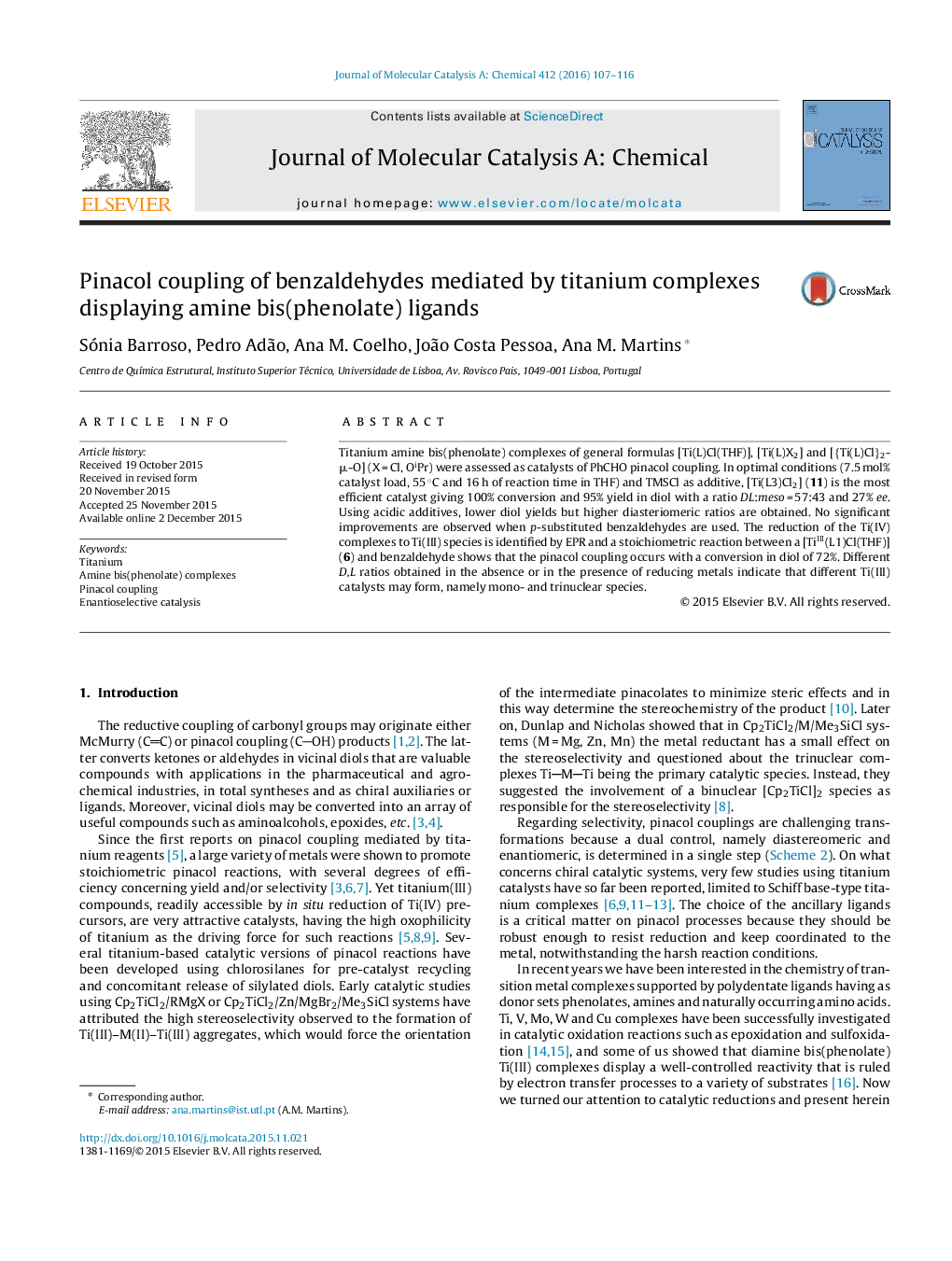| Article ID | Journal | Published Year | Pages | File Type |
|---|---|---|---|---|
| 64816 | Journal of Molecular Catalysis A: Chemical | 2016 | 10 Pages |
•Titanium diamine bis-phenolates are catalysts for benzaldehyde pinacol coupling.•Ti(III) mono- and trinuclear species are suggested as active species.•Optimal conditions gave 95% yield in diol with DL:meso = 57:43 and 27% ee.
Titanium amine bis(phenolate) complexes of general formulas [Ti(L)Cl(THF)], [Ti(L)X2] and [{Ti(L)Cl}2-μ-O] (X = Cl, OiPr) were assessed as catalysts of PhCHO pinacol coupling. In optimal conditions (7.5 mol% catalyst load, 55 °C and 16 h of reaction time in THF) and TMSCl as additive, [Ti(L3)Cl2] (11) is the most efficient catalyst giving 100% conversion and 95% yield in diol with a ratio DL:meso = 57:43 and 27% ee. Using acidic additives, lower diol yields but higher diasteriomeric ratios are obtained. No significant improvements are observed when p-substituted benzaldehydes are used. The reduction of the Ti(IV) complexes to Ti(III) species is identified by EPR and a stoichiometric reaction between a [TiIII(L1)Cl(THF)] (6) and benzaldehyde shows that the pinacol coupling occurs with a conversion in diol of 72%. Different D,L ratios obtained in the absence or in the presence of reducing metals indicate that different Ti(III) catalysts may form, namely mono- and trinuclear species.
Graphical abstractFigure optionsDownload full-size imageDownload high-quality image (90 K)Download as PowerPoint slide
